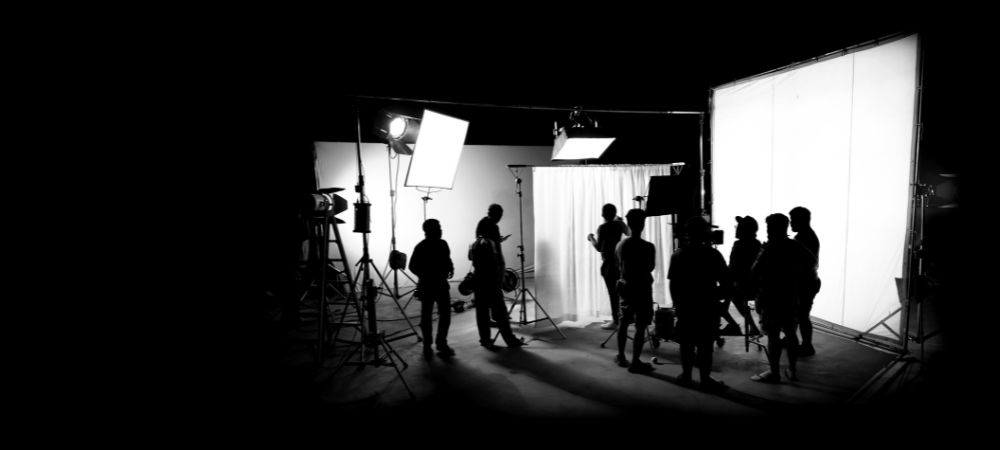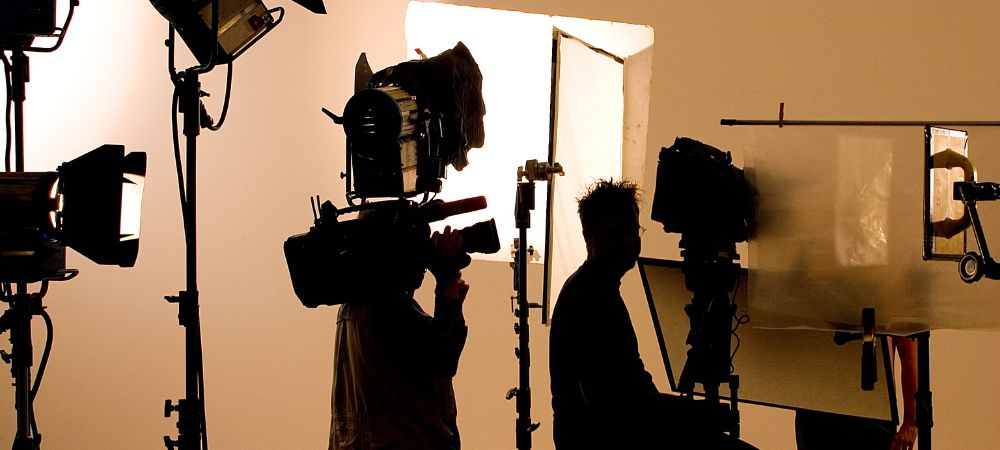

When it comes to preserving negatives and prints, you can't ignore the importance of optimal temperature and humidity levels. It's crucial, yet many folks don't pay enough attention to these factors. You'd think that just keeping them out of direct sunlight would suffice, right? Well, that's not entirely true.
First off, let's talk about temperature. The ideal range for storing your precious negatives and prints is between 65°F and 70°F (18°C to 21°C). For even more relevant information check right here. Temperatures outside this range can lead to all sorts of problems. If it's too hot, you're looking at accelerated chemical reactions which can cause fading or discoloration. Too cold? Well, freezing temperatures might make the materials brittle. You don't want your memories crumbling away, do you?
Humidity is another biggie. The sweet spot here is somewhere around 30% to 50%. Go above that and mold becomes a real risk; go below it and you might find your prints getting all dry and cracked. Neither scenario sounds appealing! So yeah, maintaining that balance is kind of a big deal.
Now you might wonder-can't I just store my stuff in the attic or basement? No way! Those places are notorious for fluctuating conditions which are no good for preservation efforts. Attics get too hot in summer while basements tend to be damp most of the time.
Oh! And don't forget about air quality either! Pollutants like dust and dirt can also wreak havoc on your stored items over time if you're not careful. A well-sealed environment with clean air circulation is essential.
So where should you store these precious items? Ideally in a climate-controlled room or storage cabinet specifically designed for archival purposes. It may sound fancy but trust me, it's worth every penny in terms of longevity.
To wrap things up: don't underestimate the impact of proper storage conditions on negatives and prints. Keep an eye on both temperature and humidity levels because they play a massive role in preservation-not doing so could spell disaster down the line.
In conclusion (not that I'd ever conclude without emphasizing), take care when choosing where to stash those irreplaceable photos or film strips; their future depends on it!
When it comes to preserving precious memories encapsulated in negatives and prints, the role of storage materials can't be overstated. Archival quality enclosures play a crucial part in ensuring that these visual treasures stand the test of time. It's not just about stashing them away; it's about how you do it.
You'd think any old box would suffice, but that's not the case at all! Regular cardboard and plastic just won't cut it. They often contain acids and other chemicals that could harm your photographs over time. So, what you need are archival quality enclosures specifically designed for long-term storage.
Now, one might wonder, what makes something "archival quality"? Well, first off, such materials are acid-free and lignin-free. This means they don't release harmful substances that could deteriorate your negatives or prints. On top of that, these materials have been tested to ensure they're safe for photographic preservation.
But let's not get ahead of ourselves-just having archival quality materials isn't enough on its own. Proper storage conditions go hand-in-hand with these enclosures to truly protect your images. For instance, temperature and humidity levels matter a lot more than people usually think! You should aim for a cool environment with low humidity to prevent mold growth and fading.
And don't forget-you shouldn't expose your stored items to light either. Even though they're tucked away inside those protective covers, light can still sneak in and cause damage over time if you're not careful.
One common mistake is thinking that once you've placed your photos or negatives into these high-quality sleeves or boxes, you're done forever. Nope! It's vital to periodically check on them to ensure no issues have cropped up over time.
Oh! And let's talk about handling as well because even the best storage solutions won't help if you're careless when taking items out or putting them back in. Always handle negatives and prints by their edges or wear cotton gloves to avoid leaving fingerprints which could leave lasting marks.
In conclusion-though it's tempting to overlook-the choice of storage material is fundamental when aiming for proper preservation of negatives and prints. While archival quality enclosures form the backbone of this effort, they must be paired with controlled environmental conditions for optimal results. Don't assume any old container will do; invest wisely now so future generations can enjoy those captured moments just as vividly as you did.
When it comes to comparing different types of film—35mm, medium format, and large format—practicality and ease of use in different settings play a huge role for photographers.. It's not just about the quality of the image; it's also about how convenient or cumbersome each type can be.
First off, 35mm film is often praised for its practicality.

Posted by on 2024-06-28
Light Exposure Risks and Mitigation Strategies for Proper Storage Conditions for Negatives and Prints
When it comes to keeping negatives and prints in good condition, light exposure is one of those sneaky culprits that can wreak havoc if not managed properly. It's not just about tossing them into a drawer or leaving them on the shelf; there's more to it than meets the eye. You might think, "Oh, a little sunlight won't hurt," but you'd be surprised at how quickly things can go downhill.
First off, let's talk about what light exposure actually does. It doesn't just fade the colors – though that's bad enough. Prolonged exposure to light, particularly UV light, causes chemical reactions in photographic materials that are often irreversible. These reactions can make your precious memories look like they belong in an old-timey horror movie rather than a cherished family album.
So, how do you mitigate these risks? Well, don't just hope for the best! One of the first steps is to store your negatives and prints in a dark place. A closet or drawer away from windows works wonders. Don't underestimate the power of darkness – it's your friend here! If you really want to kick it up a notch, consider investing in archival-quality storage boxes and sleeves that offer UV protection.
Temperature and humidity control also play crucial roles. Believe it or not, fluctuating temperatures can cause damage faster than you think. Your attic or basement might seem like perfect spots because they're out of sight, but they're usually not climate-controlled. High humidity levels can lead to mold growth – yikes! So aim for a stable environment with low humidity.
Using curtains or blinds isn't an overreaction either; it's practical thinking! Keeping direct sunlight at bay will go a long way toward preserving your photos' integrity. If you're displaying some favorite prints around the house, try putting them under UV-protective glass frames.
Now I'm not saying you should never let any light touch your photos ever again – that's unrealistic and kind of depressing! Just be mindful about where you keep them and how often they're exposed to harmful rays.
In summary (and who doesn't love summaries?), protecting negatives and prints from light exposure involves more than simply tucking them away somewhere darkish. Use proper storage materials with UV protection features, maintain consistent temperature and humidity conditions, and limit their time basking in direct sunlight as much as possible.
There ya have it! With these strategies in mind, you'll be well on your way to making sure those treasured images stand the test of time without fading into oblivion too soon.


Handling and organizing film negatives and prints can be a bit daunting, but it's totally doable with some best practices. Proper storage conditions for these precious memories is crucial if you don't want them to deteriorate over time. Let's dive into what you should - and shouldn't - do.
First off, temperature control is key. You shouldn't store your negatives or prints in places that get too hot or cold. Ideally, they should be kept in an environment that's around 65-70 degrees Fahrenheit. Fluctuations in temperature? Not good! They can cause the film to expand and contract, ultimately leading to damage.
Humidity's another biggie. High humidity levels can lead to mold growth on your prints and negatives – yikes! Aim for a relative humidity of about 30-40%. Too dry isn't great either; it could make the materials brittle.
Now, let's talk about light exposure. Negatives and prints don't like light at all! Prolonged exposure to light can cause them to fade. Store them in dark places or use archival quality storage boxes which are opaque.
And oh boy, don't even think about using regular plastic bags for storing your films and photos. Those things aren't designed for long-term storage and might contain chemicals that'll react with the film material over time. Instead, go for acid-free paper envelopes or polyester sleeves specifically made for archival purposes.
Handling these items directly with your bare hands? Big no-no! Oils from your skin can leave marks on the films which will degrade them over time. Always use clean cotton gloves when dealing with negatives or prints.
What happens if you've got a bunch of these items? Organize 'em properly so they're easy to find later on without causing any harm while rummaging through them. Label each envelope clearly with details like date, event name etc., but avoid writing directly on the negative or print itself!
Finally – don't forget periodic checks! Just because you've stored everything correctly doesn't mean it's safe forevermore. Regularly inspect your collection every few months just ta make sure there's no signs of deterioration sneakin' up on ya.
In conclusion (whew!), taking care of film negatives and prints ain't rocket science but requires attention ta detail when it comes ta proper storage conditions: controlled temperature & humidity levels; protection from light; using appropriate materials; careful handling; organized labeling; routine inspections... Followin' these best practices will ensure those cherished memories stay intact fer years ta come.
Long-term Storage Solutions: Location and Environment Considerations
When it comes to preserving those precious memories captured in negatives and prints, long-term storage solutions are crucial. It's not just about shoving them into any old drawer or box; the location and environment play a significant role in ensuring they stand the test of time. You wouldn't want to look back years later only to find your photos have deteriorated beyond recognition, would you? Let's delve into this.
First things first, you can't underestimate the importance of choosing the right location for storing these valuable items. Basements and attics might seem like convenient places, but they're often subject to extreme temperature fluctuations and high humidity levels. And trust me, that's a recipe for disaster! Negatives and prints need a stable environment-one where the temperature doesn't spike or plummet suddenly.
Humidity is another villain in this story. High moisture levels can lead to mold growth, which will ruin your photographs faster than you can say "cheese." Ideally, keep the relative humidity between 30-40%. Too dry isn't good either as it can make materials brittle over time. So nope, don't think that arid conditions are your friend here.
You've probably heard about how important light is when taking photos? Well, it's equally important-or rather unimportant-when storing them. Direct sunlight is basically negative kryptonite-it causes colors to fade and papers to yellow. A dark room with minimal light exposure is ideal for keeping prints looking their best for longer periods.
Then there's air quality. Pollutants like dust and airborne chemicals can do a number on photographic materials too. Using archival-quality storage boxes that are acid-free can help protect against some of these threats. But hey, it's not just about buying fancy boxes-make sure they're stored in a clean area as well.
Oh! Almost forgot-the impact of handling cannot be overlooked either. Even if you've got all environmental factors under control, rough or frequent handling can cause irreversible damage like scratches or fingerprints on negatives and prints. Handle with care should be more than just a cliché here!
And let's bust one myth while we're at it: digital backups don't negate (pun intended) the need for proper physical storage conditions. Yep, having digital copies is smart but they shouldn't replace good old-fashioned careful storage practices.
In conclusion (not that we ever want to conclude talking about something so vital), ensuring proper storage conditions involves paying attention to various factors including location stability, humidity control, protection from light exposure, maintaining clean air quality-and yes-even gentle handling practices matter more than you'd think! Follow these guidelines diligently and you'll give your negatives and prints their best shot at longevity without constantly fretting over potential damages.
There ya go-a few simple steps but ones that make all the difference in preserving those cherished memories for generations to come!
Periodic Inspection and Maintenance of Stored Materials
When it comes to the proper storage conditions for negatives and prints, it's crucial not to overlook periodic inspection and maintenance. Oh boy, you wouldn't believe how quickly things can go south if you ignore this step! Neglecting these tasks isn't an option if you're serious about preserving your precious memories.
First off, let's talk about what happens when you don't check on your stored materials regularly. Dust accumulates faster than you'd think, and before long, your negatives and prints are covered in a fine layer of grime. Not only does this make them look terrible, but it can also cause damage over time. And let's not even get started on mold – yuck! If moisture sneaks into your storage area, mold spores will find a way to thrive. Regular inspections help nip these issues in the bud.
Now, maintaining ideal storage conditions ain't rocket science. Temperature and humidity control are key players here. You definitely don't want fluctuating temperatures or high humidity levels messing with your stuff. A cool, dry environment is best – around 65°F (18°C) with 35-50% relative humidity should do the trick. Investing in a good hygrometer can save you from headaches down the road.
But wait – there's more! Light exposure is another villain that loves ruining photographs and negatives. Direct sunlight is a big no-no; it'll fade those prints faster than you can say "Kodak moment." Even artificial lights can be harmful if left unchecked for too long. Keeping stored materials in opaque containers or dark rooms minimizes light exposure significantly.
One thing people often forget is the importance of handling practices during inspections themselves. Always wear clean cotton gloves when touching negatives or prints to avoid transferring oils from your fingers onto them. It sounds fussy but trust me – it's worth it!
Oh yeah – labeling everything correctly might seem tedious at first, but it'll pay off later when you're searching for that one specific print among hundreds of others. Proper cataloging systems keep things organized so future inspections aren't a wild goose chase.
Lastly – don't just rely on visual checks alone! Sometimes hidden problems like acidic deterioration aren't immediately visible but can wreak havoc over time if left untreated.
So remember: regular inspection isn't just another chore; it's an essential part of preserving those irreplaceable snapshots of life's special moments! Don't skimp on maintenance either - giving attention now saves heartache later on!
In short: keep 'em cool, keep 'em dry, handle with care - oh yeah - and maybe invest in some decent shelving too while you're at it!